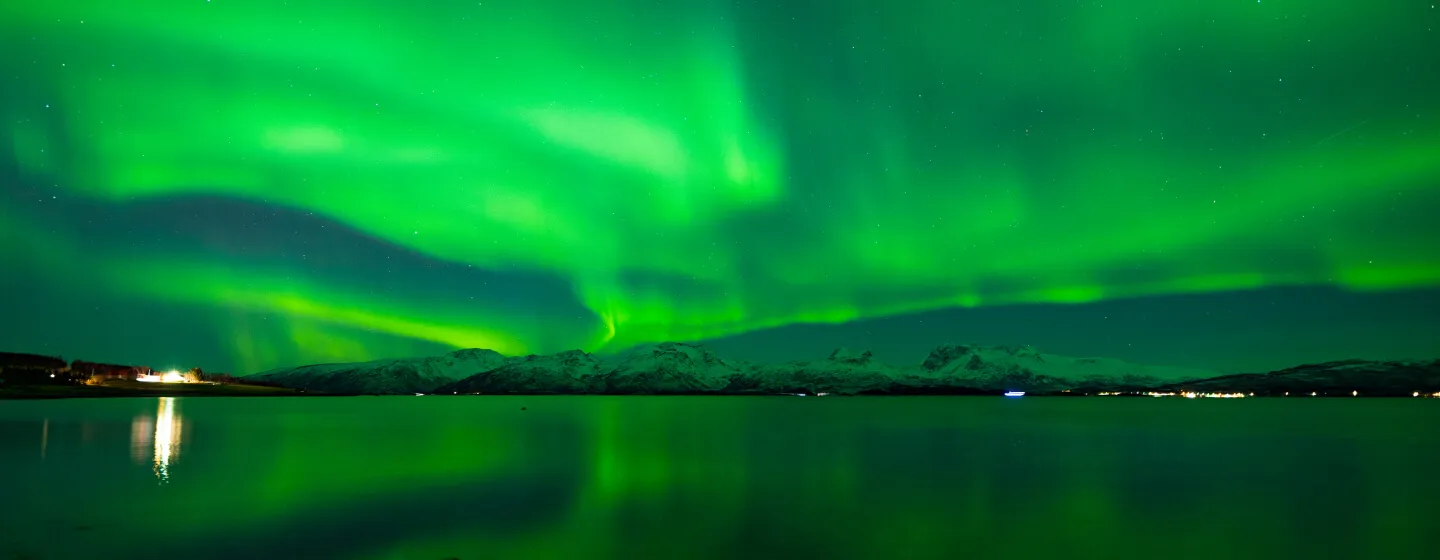Urban experiences meets raw Arctic nature
What causes the northern lights
Dead virgins or children's souls? A warning of war and misfortune? Or reflections of the swan flapping its wings? In the olden days, these were all conceptions about what northern lights could be. We now know that the northern lights originate from the sun.
Charged solar particles collide with atoms and molecules in the Earth’s atmosphere, creating the light we experience as the northern lights. The sun ejects a continuous stream of charged particles, electrons and protons, known as solar wind. The solar winds reach a speed of about 400 km/s and take around three days to reach Earth. There are areas on the sun where the solar magnetic field extends into space. From these areas, the solar winds can be ejected with considerably more mass at speeds of up to three million km/s. These particularly powerful solar winds cause powerful northern lights when the direction of the solar wind is aimed at Earth.
In addition, there are solar flares at regular intervals, which release large quantities of energy from the sun. Such flares occur in active regions around sunspots. Solar flares can provide very powerful outbreaks of the northern lights. Northern lights hunters look particularly for one type of solar flare, which is called a coronal mass ejection (or CME). This can create a geomagnetic storm that results in powerful northern lights even at lower latitudes. The CMEs can reach a speed of up to eight million km/h and take about 20 hours to reach Earth.
When the solar winds and solar flares reach Earth, they are affected by the Earth's magnetic field. The Earth’s magnetic field deflects some of the charged particles towards areas around the magnetic poles in the northern and southern hemispheres. These areas are called auroral ovals; the Northern Lights Oval and the Southern Lights Oval. When the charged particles collide with gas atoms and particles in the Earth's atmosphere, energy is emitted in the form of light – the northern lights and the southern lights.
The northern lights appear as undulating curtains or ribbons of light, which vary in shape, colour and strength. The colour of the northern lights can vary from dark blue via green and yellow to red and orange.
The Northern Lights Oval, in effect the area with the highest probability of seeing the lights, has different locations during the night and day. At night the Northern Lights Oval is right above Northern Norway and Tromsø. The latitude of the oval varies depending on the strength of the solar activity.
The altitude of the northern lights range from 80 to 250 km above the ground, and on rare occasions as high as 500-800 km. The average height of the northern lights with maximum intensity is 110-200 km, but this varies depending on the form. As the northern lights are well above any weather phenomenon, consequently the weather also plays an important role in seeing the northern lights.
